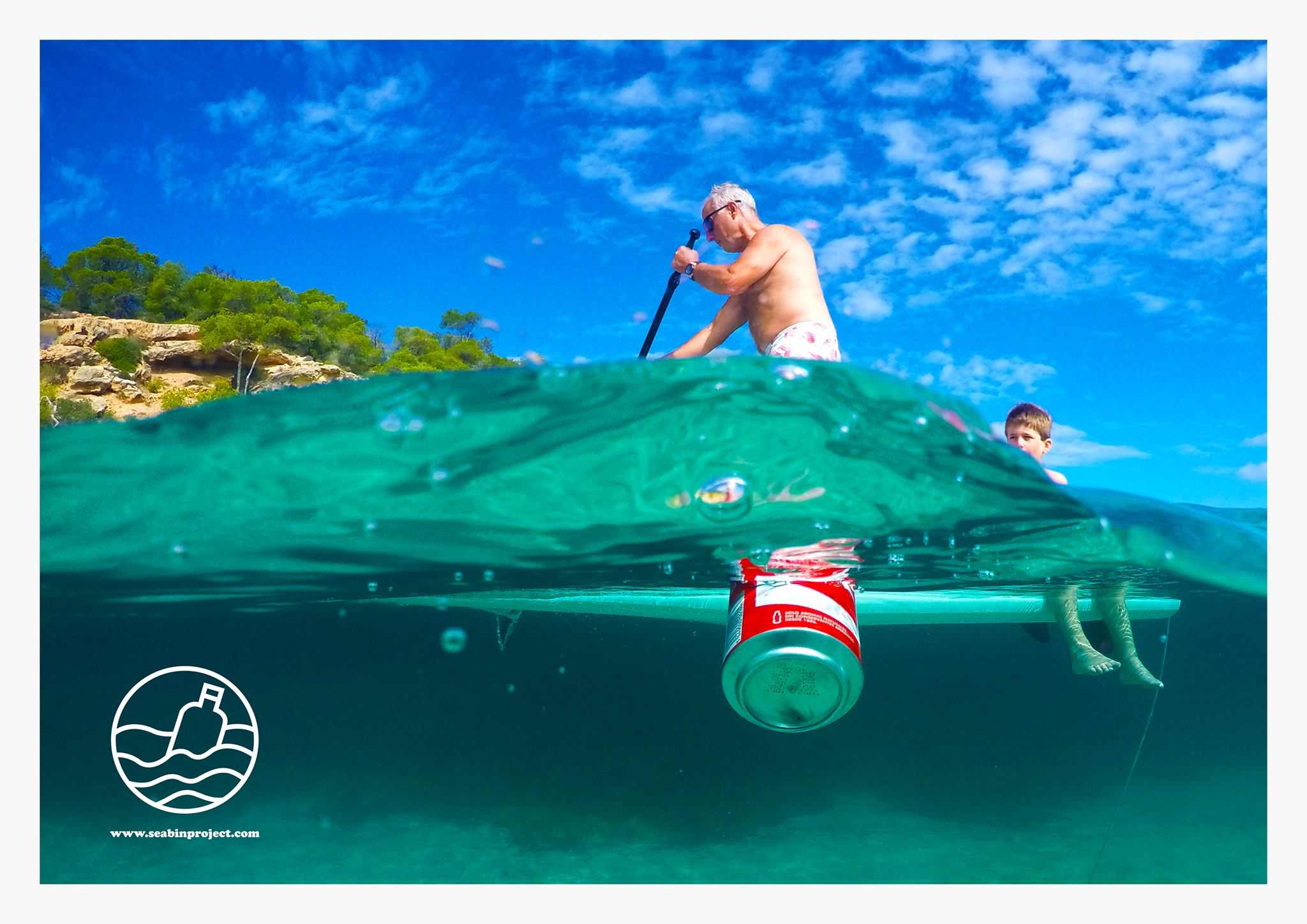Plastic pollution in our oceans is a man-made catastrophe that at times feels too big for us to solve. Reducing our plastic consumption by refusing single-use plastic is ultimately the best way to help alleviate the problem, but in the short term, it doesn’t solve the existing problem. To make a difference we need to also remove the plastics already in our oceans.
One new Australian project – The Seabin – aims to do that and more.
Seabin is a revolutionary automated in-water marina rubbish bin which will collect floating rubbish, oil, fuel, and detergents 24 hours a day, seven days a week.
The brainchild of Majorca-based Australians Andrew Turton and Pete Ceglinski, the Seabin uses a pump to funnel floating rubbish into the device, and contains an oil-water separator to catch and filter out fuel, oil and detergents in the water.
The Seabin Project is being developed in partnership with Australian marine innovation company Shark Attack Mitigation Systems Pty Ltd (SAMS). Based in Perth, WA, SAMS is headed up by ocean lovers Hamish Jolly and Craig Anderson.
Pete says the idea first came to his business partner Andrew around eight years ago after seeing marine pollution day after day in his career, building and racing yachts.
“There’s no other product like it available,” Pete says.
“Boston Harbour has a Mr Trash Wheel, but it’s only for mass clean-ups following a storm. Seabin is automated, and keeps collecting day in, day out, 365 days a year.”
In addition to collecting rubbish, Pete says the Seabin will also act as a valuable educational tool, allowing people to see just how much rubbish is collected.
The Seabin is in the final prototype phase, with a working unit currently installed in the Real Club Nautic marina in Palma Mallorca, Spain.
Palma is a vital location for the Seabin, being at the centre of Europe’s marine industry and having quick access to many of the world’s major shipping ports.
Seabin will be launching a Kickstarter campaign in early November and promoting it at the METSTRADE marine travel industry event in Amsterdam on November 17.
“We aim to have Seabin produced in the most eco friendly way possible, using sustainable materials and energy,” Pete says.
“At the moment for ease of use we are using 220vlt shore power. But we are researching alternative power sources to enable the Seabin to have a lower carbon footprint.”
“Imagine if we have a Seabin made entirely of our own captured and recycled plastics, and powered by wind, wave or solar!”
Pete says the ultimate goal of The Seabin Project is that we won’t have a need for the Seabin, but it will take a long time for this dream to become a reality.
“We need to start today if we have any hope of making a difference for the future.”
For more info, visit: seabinproject.com or get in touch via Facebook and Twitter.





This is amazing. My only question is, what happens with the plastic it collects? Where does that get dumped?
Hi Elz, thanks for your feedback. Our assumption is that the plastic is sorted and recycled using existing council infrastructure. I’ve forwarded your question to the guys behind the project to see if they have anything further to add.
Here are a few answers from the developers about production, power and other questions! http://www.diveplanit.com/2016/01/plastic-pollution-everything-you-need-to-know-about-seabin/